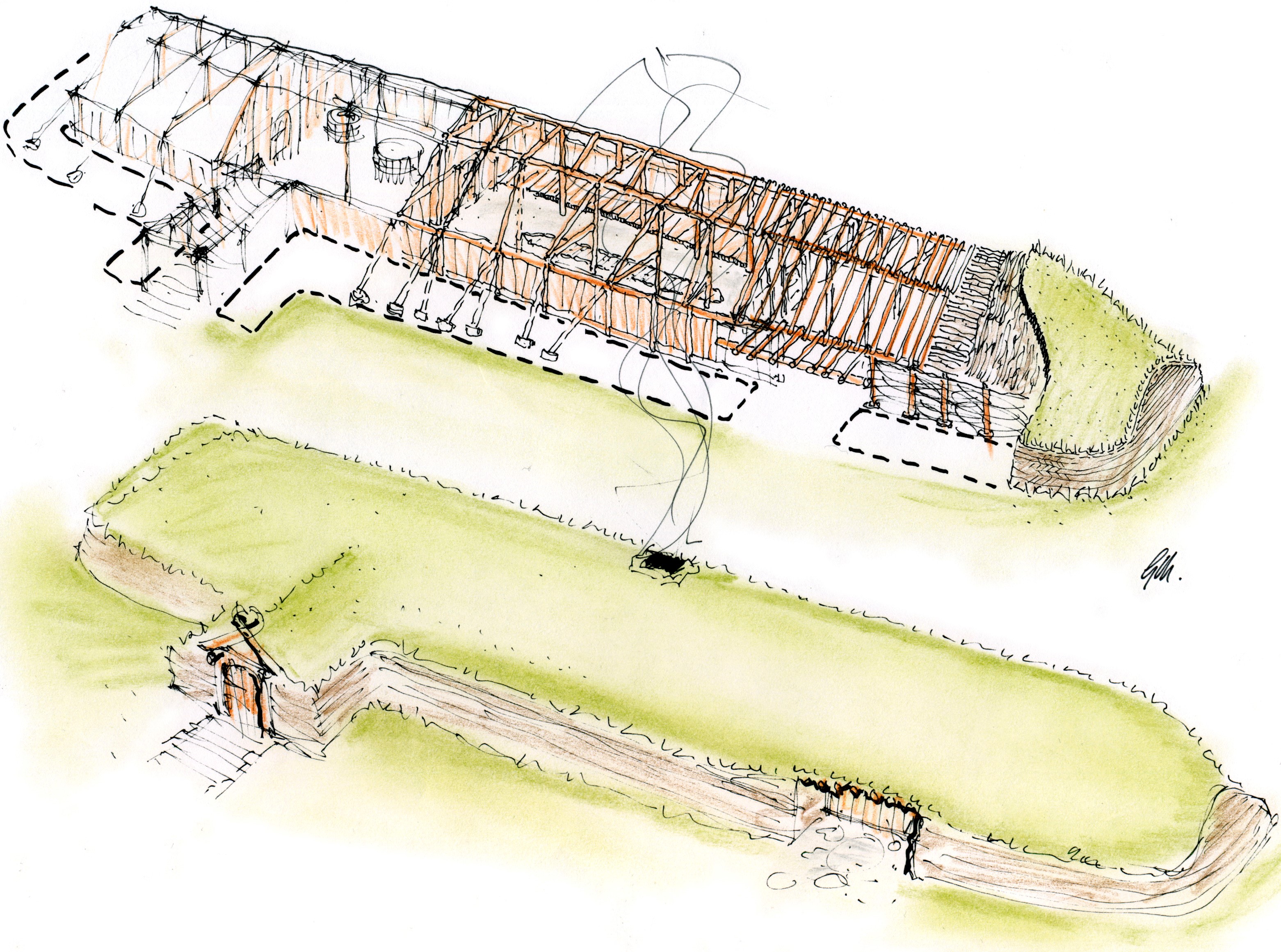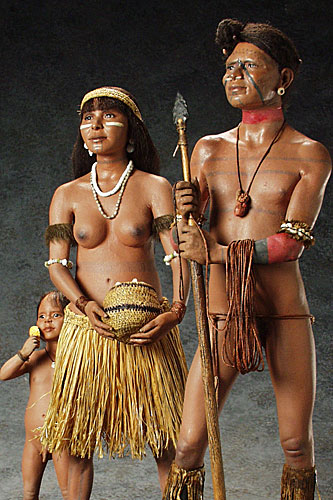|
Jon Erlandson
Jon M. Erlandson is an archaeologist and Philip H. Knight Professor of Social Sciences in the Department of Anthropology at the University of Oregon, and the director of the University of Oregon Museum of Natural and Cultural History. Erlandson’s research interests include coastal adaptations, the peopling of North America, maritime archaeology and historical ecology and human impacts in coastal ecosystems. Education and background Erlandson received his B.A. in Physical Anthropology from the University of California, Santa Barbara in 1980. He then completed his M.A. and Ph.D. from the same university in Archaeology. Erlandson also is a founding co-editor of the Journal of Island and Coastal Archaeology. He has also published over 250 scholarly articles and has edited or written 18 books. In 2013, Erlandson was elected to the American Academy of Arts and Sciences. Erlandson was born in Santa Barbara, California and enjoyed many different water-based activities, including swim ... [...More Info...] [...Related Items...] OR: [Wikipedia] [Google] [Baidu] |
Philip H
Philip, also Phillip, is a male given name, derived from the Greek (''Philippos'', lit. "horse-loving" or "fond of horses"), from a compound of (''philos'', "dear", "loved", "loving") and (''hippos'', "horse"). Prominent Philips who popularized the name include kings of Macedonia and one of the apostles of early Christianity. ''Philip'' has many alternative spellings. One derivation often used as a surname is Phillips. It was also found during ancient Greek times with two Ps as Philippides and Philippos. It has many diminutive (or even hypocoristic) forms including Phil, Philly, Lip, Pip, Pep or Peps. There are also feminine forms such as Philippine and Philippa. Antiquity Kings of Macedon * Philip I of Macedon * Philip II of Macedon, father of Alexander the Great * Philip III of Macedon, half-brother of Alexander the Great * Philip IV of Macedon * Philip V of Macedon New Testament * Philip the Apostle * Philip the Evangelist Others * Philippus of Croton (c. 6th ... [...More Info...] [...Related Items...] OR: [Wikipedia] [Google] [Baidu] |
Continental Shelves
A continental shelf is a portion of a continent that is submerged under an area of relatively shallow water, known as a shelf sea. Much of these shelves were exposed by drops in sea level during glacial periods. The shelf surrounding an island is known as an ''insular shelf''. The continental margin, between the continental shelf and the abyssal plain, comprises a steep continental slope, surrounded by the flatter continental rise, in which sediment from the continent above cascades down the slope and accumulates as a pile of sediment at the base of the slope. Extending as far as 500 km (310 mi) from the slope, it consists of thick sediments deposited by turbidity currents from the shelf and slope. The continental rise's gradient is intermediate between the gradients of the slope and the shelf. Under the United Nations Convention on the Law of the Sea, the name continental shelf was given a legal definition as the stretch of the seabed adjacent to the shores of a ... [...More Info...] [...Related Items...] OR: [Wikipedia] [Google] [Baidu] |
Coastal Migration
In the context of the recent African origin of modern humans, the Southern Dispersal scenario (also the coastal migration or great coastal migration hypothesis) refers to the early migration along the southern coast of Asia, from the Arabian Peninsula via Persia and India to Southeast Asia and Oceania. Alternative names include the "southern coastal route" or "rapid coastal settlement", with later descendants of those migrations eventually colonizing the rest of Eurasia, the remainder of Oceania, and the Americas. The coastal route theory is primarily used to describe the initial peopling of West Asia, India, Southeast Asia, New Guinea, Australia, Near Oceania, and East Asia beginning between roughly 70,000 and 50,000 years ago. It is linked with the presence and dispersal of mtDNA haplogroup M and haplogroup N, as well as the specific distribution patterns of Y-DNA haplogroup F (ancestral to O, N, R, Q), haplogroup C and haplogroup D, in these regions. [...More Info...] [...Related Items...] OR: [Wikipedia] [Google] [Baidu] |
Viking
Vikings ; non, víkingr is the modern name given to seafaring people originally from Scandinavia (present-day Denmark, Norway and Sweden), who from the late 8th to the late 11th centuries raided, pirated, traded and settled throughout parts of Europe.Roesdahl, pp. 9–22. They also voyaged as far as the Mediterranean, North Africa, Volga Bulgaria, the Middle East, and North America. In some of the countries they raided and settled in, this period is popularly known as the Viking Age, and the term "Viking" also commonly includes the inhabitants of the Scandinavian homelands as a collective whole. The Vikings had a profound impact on the early medieval history of Scandinavia, the British Isles, France, Estonia, and Kievan Rus'. Expert sailors and navigators aboard their characteristic longships, Vikings established Norse settlements and governments in the British Isles, the Faroe Islands, Iceland, Greenland, Normandy, and the Baltic coast, as well as alon ... [...More Info...] [...Related Items...] OR: [Wikipedia] [Google] [Baidu] |
Jesse Byock
Jesse L. Byock (born 1945) is Professor of Old Norse and Medieval Scandinavian Studies in the Scandinavian Section at the University of California, Los Angeles (UCLA). He received his Ph.D. from Harvard University. An archaeologist and specialist in the archaeology, history and language of the Viking Age, he is Professor at UCLA’s Cotsen Institute of Archaeology. In Iceland, Prof. Byock is the Head Archaeologist and Director of the Mosfell Archaeological Project, excavating a Viking Age valley described in the medieval sagas and written sources. The Mosfell excavations include a large well-preserved chieftain’s hall, Christian and pagan burial sites, a conversion-age stave church, and a harbor from the first centuries of Iceland’s settlement during the Viking Age. Jesse Byock is also affiliated Professor at the University of Iceland (Háskóli Íslands) in the Department of History and the Programs in Medieval Icelandic and Viking Studies, where he teaches courses in ... [...More Info...] [...Related Items...] OR: [Wikipedia] [Google] [Baidu] |
Chumash People
The Chumash are a Native American people of the central and southern coastal regions of California, in portions of what is now San Luis Obispo, Santa Barbara, Ventura and Los Angeles counties, extending from Morro Bay in the north to Malibu in the south. Their territory included three of the Channel Islands: Santa Cruz, Santa Rosa, and San Miguel; the smaller island of Anacapa was likely inhabited seasonally due to the lack of a consistent water source. Modern place names with Chumash origins include Malibu, Nipomo, Lompoc, Ojai, Pismo Beach, Point Mugu, Port Hueneme, Piru, Lake Castaic, Saticoy, Simi Valley and Somis. Archaeological research demonstrates that the Chumash people have deep roots in the Santa Barbara Channel area and lived along the southern California coast for millennia. History Prior to European contact (pre-1542) Indigenous peoples have lived along the California coast for at least 11,000 years. Sites of the Millingstone Horizon date fro ... [...More Info...] [...Related Items...] OR: [Wikipedia] [Google] [Baidu] |
Chumash People
The Chumash are a Native American people of the central and southern coastal regions of California, in portions of what is now San Luis Obispo, Santa Barbara, Ventura and Los Angeles counties, extending from Morro Bay in the north to Malibu in the south. Their territory included three of the Channel Islands: Santa Cruz, Santa Rosa, and San Miguel; the smaller island of Anacapa was likely inhabited seasonally due to the lack of a consistent water source. Modern place names with Chumash origins include Malibu, Nipomo, Lompoc, Ojai, Pismo Beach, Point Mugu, Port Hueneme, Piru, Lake Castaic, Saticoy, Simi Valley and Somis. Archaeological research demonstrates that the Chumash people have deep roots in the Santa Barbara Channel area and lived along the southern California coast for millennia. History Prior to European contact (pre-1542) Indigenous peoples have lived along the California coast for at least 11,000 years. Sites of the Millingstone Horizon date fro ... [...More Info...] [...Related Items...] OR: [Wikipedia] [Google] [Baidu] |
Channel Islands Of California
The Channel Islands () are an eight-island archipelago located within the Southern California Bight in the Pacific Ocean, off the coast of California. The four Northern Channel Islands are part of the Transverse Ranges geologic province, and the four Southern Channel Islands are part of the Peninsular Ranges province. Five of the islands are within the Channel Islands National Park, and the waters surrounding these islands make up Channel Islands National Marine Sanctuary. The Nature Conservancy was instrumental in establishing the Channel Islands National Marine Sanctuary. The islands were inhabited as early as 13,000 years ago, the earliest paleontological evidence of humans in North America. They are the easternmost islands in the Pacific Island group. The Chumash and Tongva Native Americans who lived later on the islands may be the descendants of the original inhabitants, but they were then displaced by Spaniards who used the islands for fishing and agriculture. The ... [...More Info...] [...Related Items...] OR: [Wikipedia] [Google] [Baidu] |
Kelp Forests
Kelp forests are underwater areas with a high density of kelp, which covers a large part of the world's coastlines. Smaller areas of anchored kelp are called kelp beds. They are recognized as one of the most productive and dynamic ecosystems on Earth.Mann, K.H. 1973. Seaweeds: their productivity and strategy for growth. Science 182: 975-981. Although algal kelp forest combined with coral reefs only cover 0.1% of Earth's total surface, they account for 0.9% of global primary productivity. Kelp forests occur worldwide throughout temperate and polar coastal oceans. In 2007, kelp forests were also discovered in tropical waters near Ecuador.Graham, M.H., B.P. Kinlan, L.D. Druehl, L.E. Garske, and S. Banks. 2007. Deep-water kelp refugia as potential hotspots of tropical marine diversity and productivity. Proceedings of the National Academy of Sciences 104: 16576-16580. Physically formed by brown macroalgae, kelp forests provide a unique habitat for marine organisms and are a source f ... [...More Info...] [...Related Items...] OR: [Wikipedia] [Google] [Baidu] |
Kelp Forests
Kelp forests are underwater areas with a high density of kelp, which covers a large part of the world's coastlines. Smaller areas of anchored kelp are called kelp beds. They are recognized as one of the most productive and dynamic ecosystems on Earth.Mann, K.H. 1973. Seaweeds: their productivity and strategy for growth. Science 182: 975-981. Although algal kelp forest combined with coral reefs only cover 0.1% of Earth's total surface, they account for 0.9% of global primary productivity. Kelp forests occur worldwide throughout temperate and polar coastal oceans. In 2007, kelp forests were also discovered in tropical waters near Ecuador.Graham, M.H., B.P. Kinlan, L.D. Druehl, L.E. Garske, and S. Banks. 2007. Deep-water kelp refugia as potential hotspots of tropical marine diversity and productivity. Proceedings of the National Academy of Sciences 104: 16576-16580. Physically formed by brown macroalgae, kelp forests provide a unique habitat for marine organisms and are a source f ... [...More Info...] [...Related Items...] OR: [Wikipedia] [Google] [Baidu] |
Paisley Caves
The Paisley Caves or the Paisley Five Mile Point Caves complex is a system of eight caves in an arid, desolate region of south-central Oregon, United States north of the present-day city of Paisley, Oregon. The caves are located in the Summer Lake basin at elevation and face west, carved into a ridge of Miocene and Pliocene era basalts mixed with soft volcanic tuffs and breccias by Pleistocene-era waves from Summer Lake. One of the caves may contain archaeological evidence of the oldest definitively-dated human presence in North America. The site was first studied by Luther Cressman in the 1930s. Scientific excavations and analysis in the Paisley Caves since 2002 have uncovered substantial new discoveries, including subfossil human coprolites with the oldest DNA evidence of human habitation in North America, various artifacts, and animal remains. The DNA was radiocarbon dated to 14,300 BP or roughly 12,000 BCE. The caves were added to the National Register of Historic Places ... [...More Info...] [...Related Items...] OR: [Wikipedia] [Google] [Baidu] |







